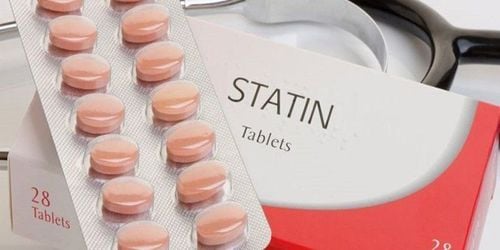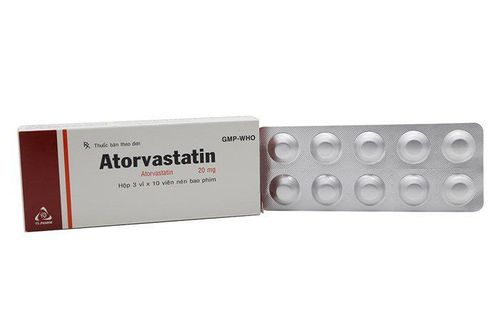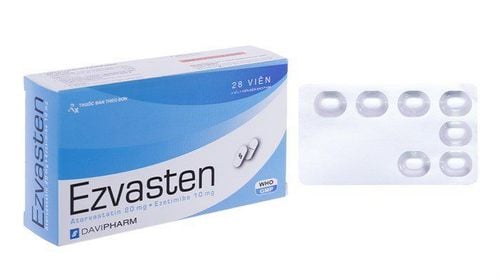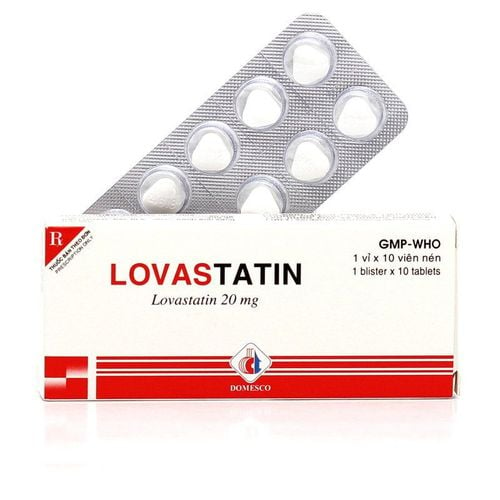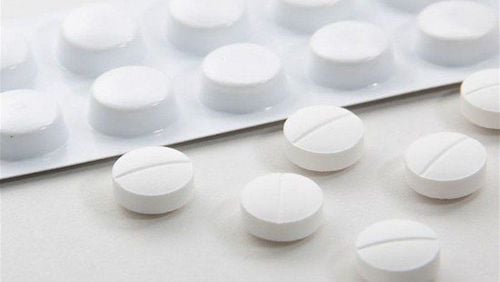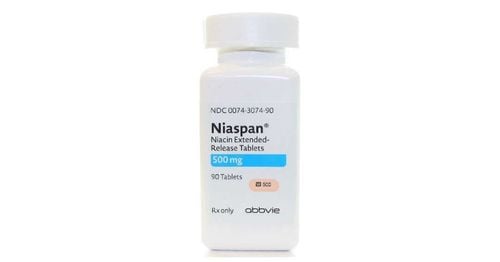This is an automatically translated article.
The article was professionally consulted with Senior Doctor, Specialist II Doan Du Dat - General Internal Medicine - Department of Medical Examination & Internal Medicine - Vinmec Ha Long International Hospital.Dyslipidemia occurs when 1 or more blood lipid indexes are abnormally increased or decreased (increased bad cholesterol - increased LDL cholesterol or increased triglycerides, decreased good cholesterol HDL-c...). The disease is often detected simultaneously with cardiovascular - endocrine - metabolic diseases. So, which groups of drugs are currently available to treat dyslipidemia?
When it comes to blood lipids, in clinical practice, we often refer to 4 main components:
Total cholesterol Triglyceride HDL - ch (High Density cholesterol), also known as "good fat" LDL -ch (Low Density Cholesterol) , also known as "bad fat"
1. Groups of drugs to treat dyslipidemia
Triglycerides are another form of fat found in the blood and in food. Elevated blood triglycerides are often accompanied by increased total cholesterol, including increased LDL (bad) and decreased HDL (good).Cholesterol circulates in the blood, but cannot move in the blood by itself. Therefore, to circulate in the blood, cholesterol must combine with a protein (also known as Apoprotein) to form Lipoprotein. Lipoproteins have an inner core of cholesterol and triglycerides
Causes of dyslipidemia can be primary (hereditary) or secondary (bad lifestyle). The treatment of dyslipidemia begins with lifestyle changes (increasing exercise, changing diet...) or taking cholesterol-lowering drugs. Currently, there are drug classes to treat dyslipidemia as follows:
Statins (Statins that inhibit HMG-CoA reductase), are the first-line drugs in the treatment of blood lipids: Like Simvastatin. Atorvastatin. Rosuvastain.Lovastatin, pravastatin, fluvastatin... Fibrate drug group: Fenofibrate. Ciprofibrate. Berafibrate... has the effect of reducing triglycerides, LDL, and increasing HDL The nicotinic acid group (Vitamin PP, Vitamin B3, Niacin) has the effect of lowering blood fat Renin group - bile acid-binding group: Like Cholestyramine. Colestipol.. Cholesterol absorption inhibitor group: Ezetimibe. Used in combination with a statin group or intolerant to statins, should not be used when triglycerides are high. 1.1. Statin cholesterol-lowering drugs (HMG-CoA reductase inhibitors) Statins reduce cholesterol in the blood by inhibiting the enzyme Hydroxymethylglutaryl CoA Reductase, an enzyme that helps synthesize total cholesterol, thereby reducing total cholesterol. endogenous part, stimulating the increase of LDL-c (LDL cholesterol) receptors. Therefore, it will increase the uptake of LDL-c in the liver, thereby reducing LDL-c, VLDL, reducing total cholesterol, triglycerides and increasing HDL-c. In addition, the statin group also contributes to reducing the inflammatory process of the vascular endothelium, helping to support the process of atherosclerotic plaque regression, increasing the synthesis of nitric oxide by endothelial cells. Dosage and active ingredients of statins:
Atorvastatin: 10 - 20mg/day, up to 80mg/day; Rosuvastatin: 10 - 20mg/day, maximum 40mg/day; Simvastatin: 10 - 20 mg/day, up to 80 mg/day; Lovastatin: 20 - 40 mg/day, maximum 80 mg/day; Fluvastatin: 20 - 40 mg/day, maximum 80 mg/day; Possible undesirable effects of statins: increase in liver enzymes, increase in muscle enzymes (with high doses or in the elderly, people taking a lot of macrolide antibiotics), so caution should be taken when using the drug. for patients with liver disease.
Indications of statin-type cholesterol-lowering drugs: increase LDL-c (LDL cholesterol), increase total cholesterol (total cholesterol: TC).
1.2. Fibrate Triglyceride Lowering Drugs Fibrate Triglyceride Lowering Drugs act by stimulating PPAR alpha. Thereby contributing to promoting fatty acid oxidation, LPL enzyme synthesis, increasing clearance of triglycerides-rich lipoproteins, inhibiting apoC-III synthesis in the liver, increasing VLDL clearance, increasing HDL by promoting expression. apoA-I and apoA-II. Dosage and names of active ingredients of fibrates:
Gemfibrozil: l600 mg/day; Clofibrate: 1000 mg/day; Fenofibrate: 145 mg/day. Undesirable effects: Fibrate-lowering drugs can cause gastrointestinal disturbances (flatulence, abdominal distention, nausea), mild decrease in liver function, increase in liver enzymes, gallstones, increase in muscle enzymes, skin rash. ... when taking high doses, or the elderly, with pre-existing kidney and/or liver disease. In addition, drugs that reduce triglycerides of the fibrates group also increase the effect of anticoagulants, especially those of vitamin K antagonists.
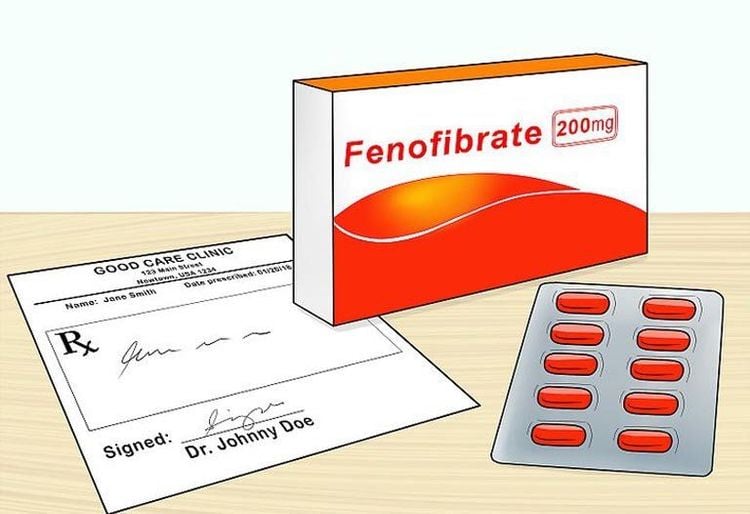
Fenofibrate là một trong các thuốc thuốc giảm triglycerides nhóm fibrate
1.3. Nicotinic acid group (Niacin, vitamin PP). The nicotinic acid group is indicated for the treatment of increasing LDL-C, lowering HDL-C, increasing triglycerides thanks to the following mechanisms: drugs to reduce triglycerides by inhibiting the breakdown of fat, reducing the synthesis of triglycerides in the liver, and inhibiting the synthesis of triglycerides in the liver. fatty acid esterification in the liver, increased apoB degradation, decreased VLDL, decreased LDL cholesterol, increased HDL due to decreased clearance of apoA-I). Dosage and brand names (Niacor, Niaspan, Slo-niacin) of nicotinic acid group:
Rapid release type: 100 mg/dL, maximum 1000 mg/day; Rapid-release type: 250 mg/dL, up to 1500 mg/day; Rapid-release type: 500 mg/dL, up to 2000 mg/day. The nicotinic acid group can cause flushing, itching, digestive disorders, mild decrease in liver function, increased liver enzymes, gallstones, increased muscle enzymes, skin rashes, increased resistance to insulin hormone... when used in high doses. high, common in the elderly, patients with pre-existing kidney/liver disease.
1.4. Resin group helps lower LDL cholesterol Resin group is indicated in case of increased LDL-c, mechanism of action on Cl- ion exchange with bile acids, increase synthesis of bile acids from cholesterol, increase bile secretion and lower cholesterol. in the liver, stimulates the synthesis of LDL-c receptors, increases the elimination of LDL-c. Dosage and name of resin group:
Cholestyramine: 4 -8 g/day, maximum 32 mg/day; Colestipol dose: 5 -10 g/day, maximum 40 mg/day; Colesevelam: 3750 g/day, maximum 4375 mg/day. The resin group has undesirable effects in the digestive system such as flatulence, abdominal distension, constipation...
1.5. Ezetimibe The drug Ezetimibe has the effect of lowering LDL cholesterol by inhibiting the absorption of total cholesterol in the intestine, lowering LDL-c and increasing HDL-c. Ezetimibe has very few side effects but still has the risk of increasing liver enzymes and is used at a dose of 10mg/day.
1.6. Omega 3 Omega 3 increases the catabolism of triglycerides in the liver, so it should be used as a drug to reduce triglycerides at a dose of 3g/day, up to 6g/day. Omega 3 has undesirable effects related to digestive disorders such as flatulence, abdominal distension, diarrhea.
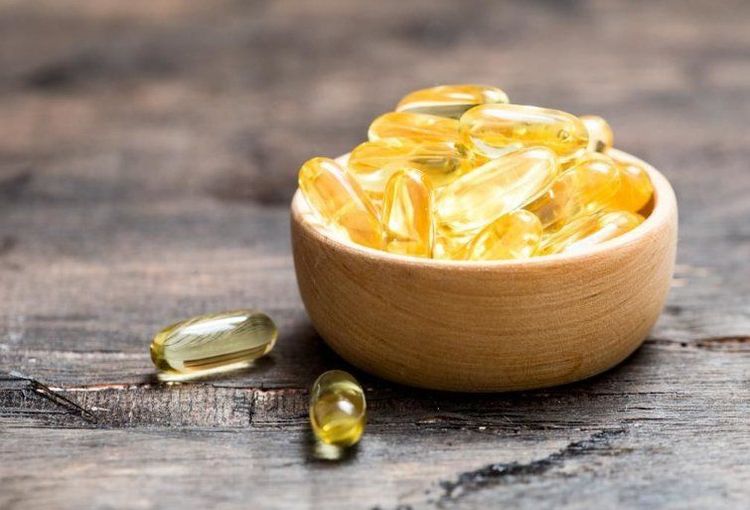
Trong các loại thuốc giảm triglycerides có thể nhắc đến Omega 3
2. Active ingredient Rosuvastatin is indicated in which cases?
Currently, Rosuvastatin is the most prominent active ingredient in the statin group of cholesterol-lowering agents (referred to as 3rd generation statins). Rosuvastatin circulates on the market under many different trade names such as: Rotorlip 10, Crestor... with 10mg content and the dosage form is film-coated tablets. Similar to other statins, Rosuvastatin inhibits cholesterol biosynthesis, reduces cholesterol in hepatocytes, stimulates LDL receptors to increase transport of LDL from the blood, thereby resulting in a decrease in plasma cholesterol concentrations. . Clinically, Rosuvastatin is very effective in lowering LDL cholesterol, increasing HDL cholesterol, and reducing triglycerides by increasing the clearance of residual VLDL by the LDL receptor. Therefore, Rosuvastatin is indicated in:
Primary hypercholesterolemia; Mixed dyslipidemia; Primary dyslipidemia beta; Increased triglycerides; Slow down the progression of atherosclerosis in the coronary artery wall; Familial hypercholesterolemia; Prevention of cardiovascular disease in people at high risk. Initially Rosuvastatin 5-10 mg/time/day, dose may be adjusted every 4 weeks but maximum 40 mg/time/day, children 10 - 17 years old dose 5 - 20 mg/day, maximum 20 mg/day day. Asians are 2 times more likely to absorb Rosuvastatin than Caucasians, so an initial dose of 5 mg should be considered in Asians.
There are many groups of drugs to treat dyslipidemia, depending on the patient's health condition, the doctor will prescribe the drug with an appropriate dose to prevent dangerous complications from occurring.
Knowing information about drugs to treat dyslipidemia before use always brings positive effects as well as limits risks for patients. If you have any questions, you can send them to Vinmec International General Hospital to receive in-depth advice from a team of doctors and pharmacists with many years of experience.
Please dial HOTLINE for more information or register for an appointment HERE. Download MyVinmec app to make appointments faster and to manage your bookings easily.




